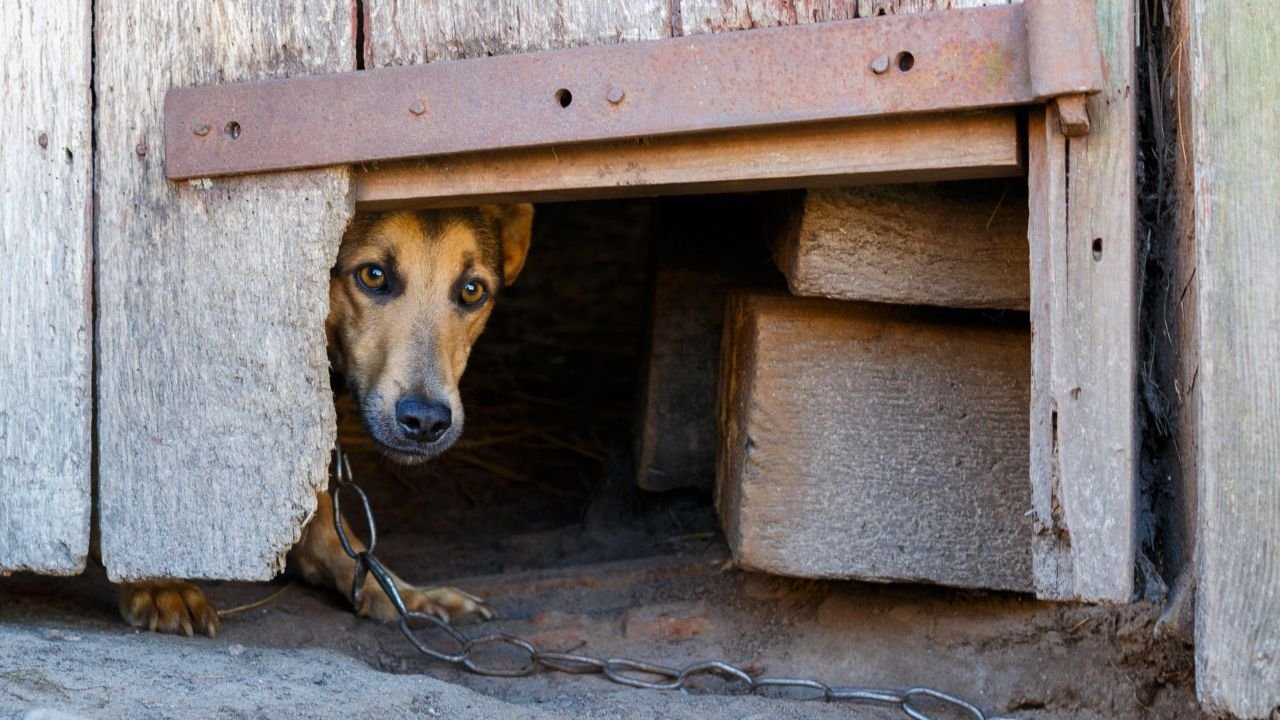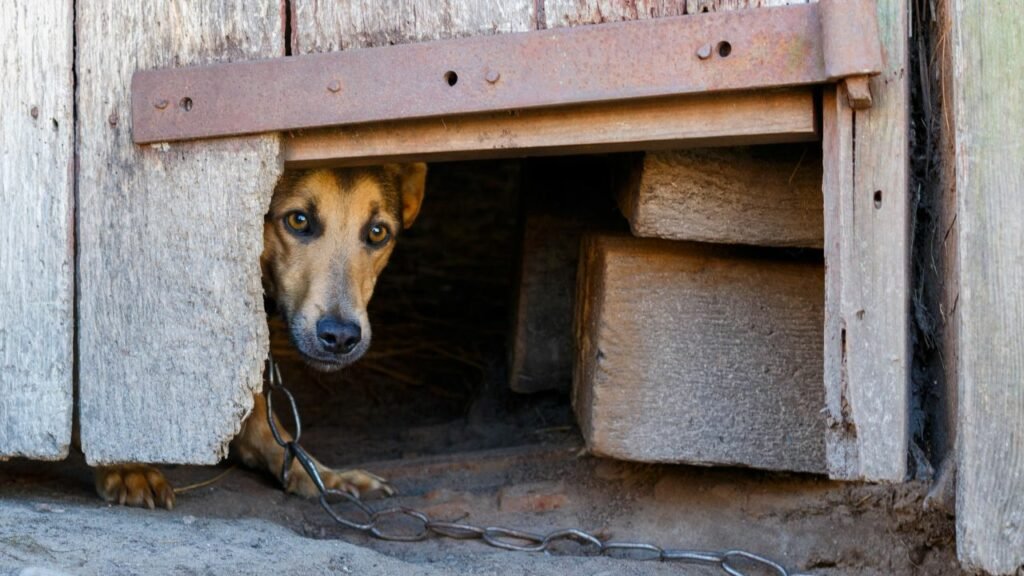Dogs, our loyal companions, share more with us than just unconditional love. Like humans, they too experience fears and phobias that can impact their well-being.
As responsible pet owners, it’s crucial to recognize the signs of fear in our furry friends and take steps to alleviate their anxieties. Let’s learn about the diverse fears that dogs may encounter and explore the most effective ways to comfort them when they need it the most.
1) Lawnmowers and Vacuum Cleaners
The seemingly mundane sounds of household appliances, like lawnmowers and vacuum cleaners, can be downright terrifying for our canine companions. Loud noises and sudden movements from these can easily trigger a dog’s anxiety.
Gradually expose your dog to these sounds in a controlled environment to ease their fears. You can use positive reinforcement, like treats and affection, when they hear these sounds. In time, your dog will learn that there’s really nothing to be afraid of whenever a loud appliance goes off.
If you raise your dog from puppyhood, they’re more likely to be exposed to the sound of vacuum cleaners early and eventually be desensitized to the noise these machines make. All the same, have patience and allow your dog to take it slow whenever you turn a loud appliance on. It would also help for you not to be too sudden in switching it on so that your dog doesn’t suffer a jump scare.
2) Fireworks
While dazzling to humans, fireworks can be a source of immense stress for dogs. The unpredictable bursts of light and deafening explosions can make a dog ill at ease during New Year or Fourth of July celebrations.
Comfort your pup by creating a safe and quiet space for them to retreat to during fireworks displays. You can also use calming products like wraps, thunder shirts, or sprays. In addition, try distracting them with their favorite wholesale dog toys and drawing their attention away from the bright lights and loud sounds.
3) Thunder
For similar reasons as the causes above, thunderstorms can also incite fear in dogs. Unfortunately, unlike fireworks displays, it’s harder to predict when a thunderstorm will happen.
As soon as you see dark clouds ahead, be proactive in creating a comforting environment for your dearest doggo. Let them hide away from the windows, where claps of thunder may be loudest.
Next, try calming techniques such as petting and grooming your dog. It would also be good to distract them with toys or treats.
4) Going Up and Down the Stairs
Stairs can also be a source of fear in dogs, often stemming from past negative experiences like falling down from them and getting hurt. Some may also exhibit a fear of heights.
To get them flying up and down the stairs in no time, guide your dog with patience and positive reinforcement. Lay a treat down on every step, for example, to motivate them to get used to climbing or making their way down to the next floor.
5) Visits to the Vet
Visits to the vet can be a significant source of anxiety and fear for dogs. Who can blame them when they can usually expect to be examined or given painful shots whenever they visit their vet?
To make these trips less stressful, create more positive associations for vet visits by regularly rewarding your dog during and after each visit to the clinic. Bring their favorite toys or blankets to provide them with a sense of familiarity and comfort, especially when they expect to undergo a major procedure. After your visit, you can also take your pup to the nearest dog-friendly coffee shop and order them a warm puppuccino to calm their nerves.
6) Men
Some dogs may also exhibit a particular fear towards men, possibly due to their size and deeper voices compared to women. An adopted or rescued dog may also harbor past trauma perpetrated by a male figure.
Encourage positive interactions between your dog and the men in your life by allowing them to approach the latter at their own pace. Moreover, offer treats and praise as rewards for calm behavior around men.
7) Children
The energetic and unpredictable nature of children can be intimidating for some dogs. Like a fear of men, a fear of children may have stemmed from a bad experience with a child who did not know how to act around a dog properly.
For the best outcomes, introduce your dog to children in a controlled environment, and allow them to acclimatize to the children’s gradually. It’s also very important to teach children to approach dogs calmly and gently and to never force a dog to be friendly with them or overstep a dog’s boundaries.
8) Strangers
General fear of strangers is not uncommon in dogs. But this could make walking around the neighborhood a real challenge for you and your pup.
Like with the situations above, gradual introductions and positive reinforcement can make a huge difference to address your dog’s fear of strangers. Regular, but gradual exposure to your neighborhood and the people in it will also temper down your dog’s fear of the unfamiliar.
9) Other Dogs
A typical dog with a healthy disposition usually greets their fellow dogs. But being around unfamiliar dogs can set off a fearful—or worse yet, aggressive—reaction from your pooch.
In this case, proper socialization is key. Little by little, you can lead your dog to other dogs in a safe space. Reinforce any good behavior demonstrated to other dogs with plenty of praise and treats.
10) Being Left Alone
Separation anxiety is a prevalent fear among dogs. How many times does yours whine or cry when they sense you’re on your way to work?
Help ease this fear by practicing gradual departures and getting your dog used to your temporary absence. You can also create a comfortable space for your dog in your home and populate it with engaging toys or puzzles to keep them occupied until you come home.
If any of these fears applies to your dog, use the abovementioned tips to comfort them. With more than a little patience and love, we can help our furry friends overcome their fears and help them feel safe and at ease.








Leave a Reply